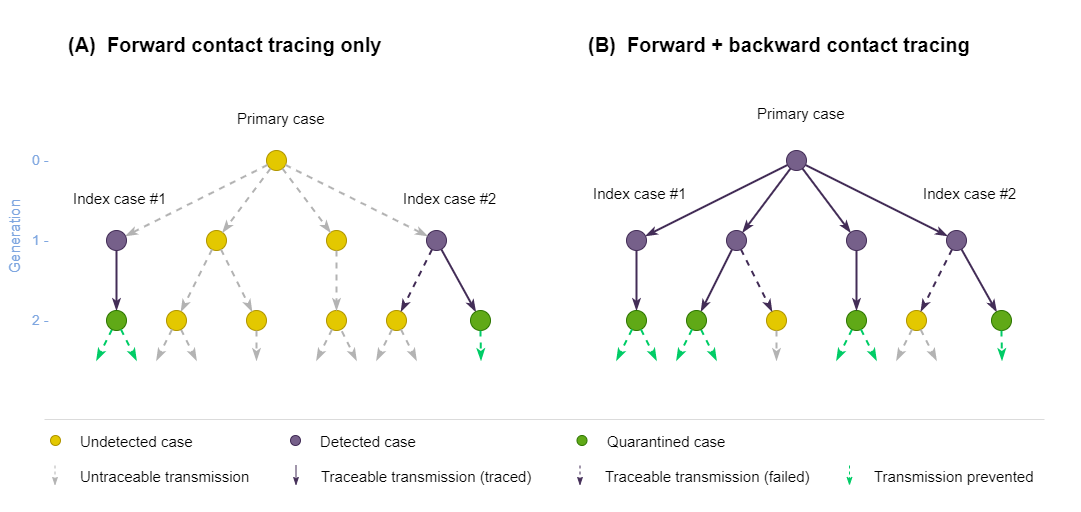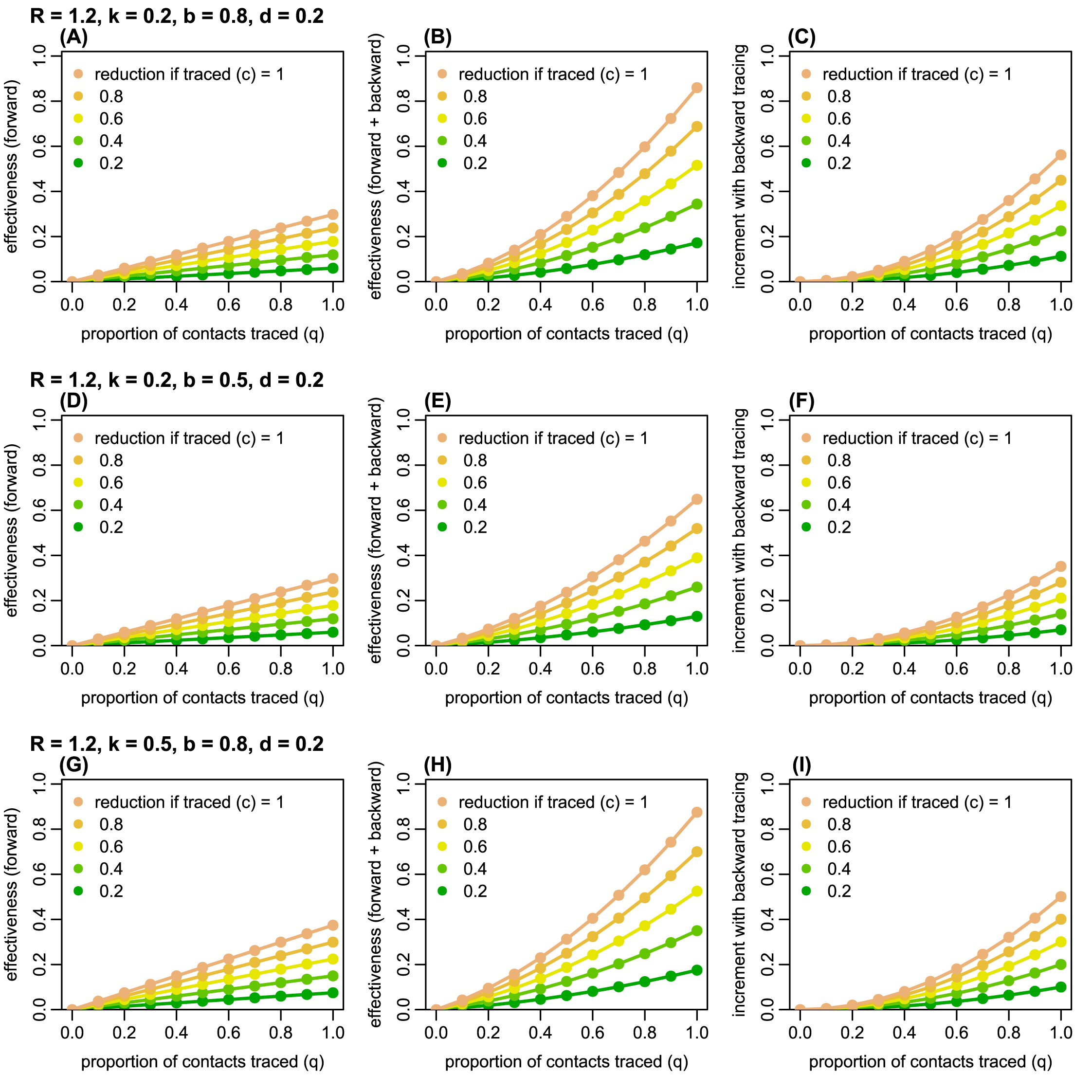Implication of backward contact tracing in the presence of overdispersed transmission in COVID-19 outbreaks
This study has not yet been peer reviewed.
Abstract
Unlike forward contact tracing, backward contact tracing identifies the source of newly detected cases. This approach is particularly valuable when there is high individual-level variation in the number of secondary transmissions. By using a simple branching process model, we explored the potential of combining backward contact tracing with more conventional forward contact tracing for control of COVID-19.
 Figure 1. Schematic illustration of forward and backward contact tracing. Two cases (index cases #1 and #2) from a transmission tree originating from an (initially) undetected primary case are assumed to be detected by surveillance. Possible results of contact tracing are shown where (A) only forward tracing is performed; (B) both forward and backward tracing are performed. Some cases may remain undetected because contact tracing can miss cases.
Figure 1. Schematic illustration of forward and backward contact tracing. Two cases (index cases #1 and #2) from a transmission tree originating from an (initially) undetected primary case are assumed to be detected by surveillance. Possible results of contact tracing are shown where (A) only forward tracing is performed; (B) both forward and backward tracing are performed. Some cases may remain undetected because contact tracing can miss cases.
 Figure 2. The estimated effectiveness of forward and backward contact tracing for different parameter values. R: the reproduction number; k: overdispersion parameter; b: probability of successful identification of the primary case; d: probability of detection of G2 cases independent of contact tracing. Left panels (A, D, G): the effectiveness (the proportion of G3 cases averted) of forward tracing alone; middle panels (B, E, H): the effectiveness of a combination of forward and backward tracing; right panels (C, F, I): incremental effectiveness by combining backward tracing with forward tracing. Colours represent the relative reduction in infectiousness of G2 cases if traced and put in quarantine.
Figure 2. The estimated effectiveness of forward and backward contact tracing for different parameter values. R: the reproduction number; k: overdispersion parameter; b: probability of successful identification of the primary case; d: probability of detection of G2 cases independent of contact tracing. Left panels (A, D, G): the effectiveness (the proportion of G3 cases averted) of forward tracing alone; middle panels (B, E, H): the effectiveness of a combination of forward and backward tracing; right panels (C, F, I): incremental effectiveness by combining backward tracing with forward tracing. Colours represent the relative reduction in infectiousness of G2 cases if traced and put in quarantine.